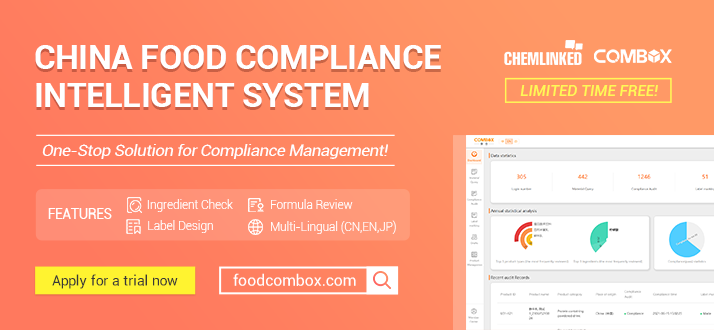Interpreting the Trends in China’s Cat Food E-Consumption
Author:Lin Fang(https://www.linkedin.com/in/fang-lin-fiona/)
Regulatory Analyst, Agrochemical Department
According to the Euromonitor, China’s cat food consumption is expected to exceed Japan to some 1.8 billion USD by 2022. The “Cat Economy” has set off a wave of cat-related consumption since 2016. 80% of the cat owners have ever purchased cat food or cat-use items through Taobao and Tmall, followed by JD, Boqii, Goumin, Epet and Amazon. Sales growth through Taobao and Tmall is almost 3 times the average growth of overall e-shopping platforms. Based on substantial shopping data, this article tries to reveal the new trends of cat food consumption in China from detailed aspects including age and gender distribution, habits and preference, etc.
Consumption Upgrading
Cat food represent a higher percentage in terms of sales value and Tmall has higher user percentage than Taobao. This shows that the Chinese cat keepers are demanding more on product quality and brand. Cat food Priced at 60-100 Yuan/kg contributed nearly 30% of the sales and the value and purchasers of cat food priced above 60 Yuan/kg has grown by 68% in 2018. 90% of the high-price brand are imported cat food and French brands have the highest popularity among all sourcing origins. Likewise, the value percentages of low-price canned food (0-5 Yuan/can) and treats (0-20 Yuan per unit) have dropped by 11.7% and 19% from 2016 to 2018.
The number of wet food users has grown by 300% from 2016 to 2018. More and more Chinese keepers realized the importance of water intake and transformed from “amateur keepers” from “professional keepers”.
Dietary Diversity
Staple food accounted for over 70% of the total sales of cat food, but the percentage of cat treats has grown by 3% and sales growth of this category is 10.7% higher than staple food. Chinese cat owners started paying more attention to dietary diversity for their pets and parts of the staple intakes have been replaced by cat treats.
Customized and functioning cat food are tailored for specific breeds, life stage and health conditions and sales value of these categories has grown by more than 100% for 2 consecutive years. The British Shorthair and American Shorthair are the most popular breeds among customized food and the most popular claims for functioning food are hairball removal, kitten care and lose weight.
The sales value percentage of cat treats priced above 100 Yuan has grown from 14.55% in 2016 to 28.54% in 2018 and the most grown categories were cat sugar(+200%), pudding(+162%), dried fish/meat(+133%), molar rod(+80%) and catnip(60%).
Consumer Groups
The staple food is the most substantial costs for cat owners, which accounted for about 60% of the expenditure together with cleanings supplies and cat treats. Daily necessities, health care products and toys accounted for 20% of the expenditure. At the same time, cat owners usually raise other pets including dog, hamster and rabbit. On average, cat owners purchased hamster-use products for 8 times a year.
Nearly half of the keepers are company employee and married people. The post-90s group accounted for 50% of cat food consumption and the number of post-95s users more than doubled.
The e-shopping of female buyers is 1.8 times higher than male buyers. In 2018, the new users roughly equally split between men and women. Over 40% of the users spend more than 200 Yuan/year on cat food and the percentage of users who spend more than 1500 Yuan/Year is 7%. Female cat owners have higher user percentage who spend more than 500 Yuan/Year. They also have a considerable preference on make-up products, athletic undergarments and color contact lens and extremely strong preference on infant products, baby food and pre-delivery supplies. Female keepers will not keep a distance from their pet because of their babies. Male keepers are prone to purchase game consoles, gamepad and keyboard and have a distinct preference on vacuum cleaner and Dyson is the most favorite brand, mainly due to they are more susceptible to cat hair.
Purchasing Behaviors
41% of the users purchased cat food for 2 to 10 times per year and 12% of the users purchased more than 20 times per years. The pre-70s and post-90s have the most purchasing frequency among all age groups. The decisive determinants are palatability, logistics and quality but more purchasing preferences are varying depending on their age groups:
- Flavors– Although Chicken is the most popular flavor among cat keepers, the post-70s only like tuna, bonito and other marine fishes and the post-90s have an extraordinary willingness on mint flavor, venison and salmon;
- Pack size-The 10-kilogram bag, 2-kilogram bag and 15-pound bag are the most common size in China. The post 95s have a high preference on small size below 2.5 kilograms while the 10-kilogram bag has the highest popularity among the pre-70s. The post-90s are the biggest purchaser of imported pet food and the main pack sizes are the 15-pound bag, 12-pound bag and 8-pound bag;
- Sales Promotion– About 10% of the sales value is generated during promotional events such as the “6.18”, “11.11” and “12.12”. The post-85s are more price-sensitive and have the highest engagement during the events while the post 95s have the lowest participation, mainly because they are the most frequent purchasers throughout the year;
- Cat Treats– Dried fish and dried meat have the highest popularity among the pre-70s and post-70s keepers. The post- 80s keepers place more emphasis on product utility and the most popular cat treat is the molar rod. The post-90s are more focused on interestingness and the most purchased treats are catnip, pudding and cat sugar;
- Brand-Homemade cat food are most purchased by the pre-70s and post 95s. The post-80s and post-90s have a stronger preference on foreign brands. Japan and French brands are more popular among the post-80s while the post-90s prefer the US and Canadian brands. The most priced foreign are ORIGEN, ACANA, NATURE BRIDGE, PETMASTER, FISH4DOGS, ROYAL CANIN, OPTIMANOVA, NATURE’ VARIETY, PRO PLAN AND INSTINCT, in turn.




